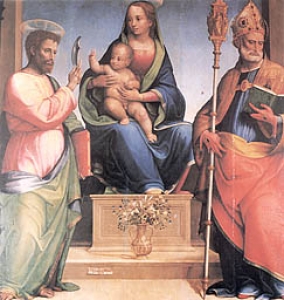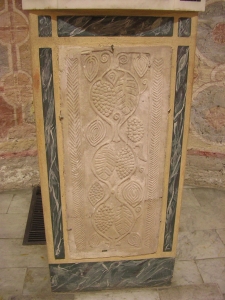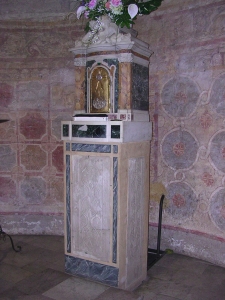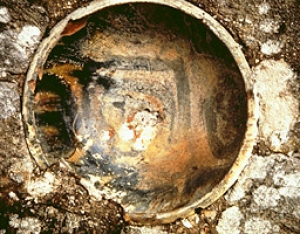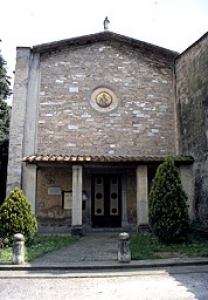
Information
Foundation:
VII secolo
District/Location:
Capannori, località Cantignano
District:
Piana di Lucca

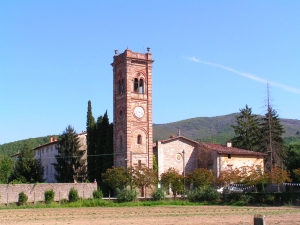
The abbey of Saint Bartolomeo in Cantignano is one of the most significant architectural monuments in the territory of Capannori. With the typical single-nave plan of the conventual structures the church, despite the modern interventions, still shows numerous traces of its early medieval foundation.
Badia San Bartolomeo, Cantignano, Capannori
The abbey San Bartolomeo, mentioned for the first time in a document dated 914 with the dedication to the Savior, presents three distinct and important construction phases, to which one must add one that emerged only from archaeological excavations and referable to a cult building datable between 5th and 6th century located at the present apse area. The first of them is particularly significant for its antiquity: in fact the base parts of the walls of the apse and of the left transept - with large parts in opus spicatum - are to be referred to the early Middle Ages, between the 7th and 8th centuries. Of this important phase, which makes the building a very important testimony in the landscape of early medieval architecture in Lucca, there are also some sculptural fragments preserved inside the church: the most important of them are three small pillars that until recently were walled together to form the basis for a modern tabernacle and which have recently been dismantled to be restored and exhibited in the Lucca and Europe exhibition. An idea of the Middle Ages. 5th-11th century held in Lucca in 2010. Other fragments of lesser value but still requiring a specific study are kept in a room below the presbytery area, together with plaster fragments with traces of paint. The second phase of the building is that in which it substantially assumed its present appearance and dates back to the late 11th century: structures of this era are also those in the upper part of the apse area and of the left transept, in addition to the perimeter walls of the building with the exception of the facade. In the apse this intervention is better preserved and shows a wall built with regular rows of squared ashlars with a decoration with double arches on hanging pilasters. The dating to the 11th century is motivated not only by the constructive and decorative solutions described, but also by the presence of some ceramic basins walled up in the structure, among which we note an Egyptian specimen from the mid-11th century; a reuse of a fragment of Roman mosaic is instead used in the arch of the transept portal. This phase also includes the fresco decoration at the base of the presbytery basin, depicting geometric motifs, plant shoots and a bearded man close to contemporary miniatures from the Lucca area. At this time - at the beginning of the 12th century - the abbey came under the Camaldolese rule by the will of the bishop of Lucca Rangerio.
The last substantial intervention on the church, carried out in the 18th century, entailed the shortening of about seven meters and the consequent reconstruction of the façade, to which a portico was then placed. The interior was also rebuilt on that occasion, but the Baroque appearance was completely canceled during a restoration in the 1960s. Inside is a table by Agostino Marti with the Madonna enthroned between the saints Bartolomeo and Martino executed by the painter in 1516 on commission from the Gigli family; in the predella are depicted the Martyrdom of Saint Bartholomew, the Lamentation over the Dead Christ and the Alms of Saint Martin.
The last substantial intervention on the church, carried out in the 18th century, entailed the shortening of about seven meters and the consequent reconstruction of the façade, to which a portico was then placed. The interior was also rebuilt on that occasion, but the Baroque appearance was completely canceled during a restoration in the 1960s. Inside is a table by Agostino Marti with the Madonna enthroned between the saints Bartolomeo and Martino executed by the painter in 1516 on commission from the Gigli family; in the predella are depicted the Martyrdom of Saint Bartholomew, the Lamentation over the Dead Christ and the Alms of Saint Martin.
Scopri altre attrazioni vicino a Abbey of Saint Bartolomeo
See allYou may also like..
See allFind more
0








